 Download this article in magazine layout
Download this article in magazine layout
- Share this article
- Subscribe to our newsletter
Unveiling opportunities and reducing climate vulnerability in the camelid value chain in the Andean Region
The South American camelids consist of four species: alpacas, llamas, vicuñas and guanacos. The first two are domesticated species that sustain the economies of around 143,000 families in rural indigenous communities of Bolivia and Peru, providing milk, meat, skin, and textile fibre, as well as serving as a means of transportation and load bearing. Many families prioritise their breeding due to their adaptability to geographical and climatic conditions where other livestock species do not survive. Additionally, camelids stand out for their unique grazing method that does not harm the soil and prevents desertification, as they cut vegetation with their teeth and, shaped as they are, their hooves cause no damage.
However, the habitat of these two species has been facing climatic risks in recent decades, such as intense droughts caused by rising temperatures and reduced rainfall, as well as out-of-season frosts. Faced with this situation, women, who in most cases lead the breeding, are forced to take their livestock to higher altitudes in search of pasture and water sources, or to sell their animals anticipating imminent deaths because of climatic conditions and the inability to buy fodder or cultivate pastures due to lack of water. In territories 3,600 metres above sea level or higher, llama and alpacas’ populations represent the main source of livelihood in fragile and vulnerable ecosystems.
In this context, the camelid value chain presents structural complexities that hinder the insertion of Andean highlands pastoralist families into the market under a sustainable and profitable approach. Alpaca ranching is oriented towards fibre production for textiles, and in the case of llamas, there is a growing insertion into the market for fresh and dried meat (“charque”). Their breeding faces challenges from genetic selection to ensure better fibre quality, as well as efficient management of pastures and water in high-altitude terrain, and infrastructure for livestock care. In the manufacturing process, most communities offer raw materials in fleece, carcass, or skin because families, in many cases, lack the categorisation and classification knowledge to add value and offer the fibre in one of the six differentiated qualities. At the commercialisation level, the chain still involves many intermediaries, which harms income.
Various national programmes in Bolivia and Peru, as well as international cooperation projects, focus their efforts on rural extension and industrialisation, which have improved basic conditions to some extent. This article describes experiences in both countries, implemented through the Andes Resilientes al Cambio Climático regional project, facilitated by the Helvetas Swiss Intercooperation-Avina Foundation consortium and financed by the Swiss Development Cooperation (SDC). The experiences stem from the need to identify links in the Andean camelid value chain with significant and sustainable impacts, considering present and future climate scenarios, the empowerment of women in the manufacturing process and the formulation of financial products that change the sector’s perception towards this economic activity.
An underestimated potential: alpaca women, key to climate adaptation in Peru
Peru has the largest population of camelids in the world and is the leading producer of alpaca fibre, with 5,000 tons per year thanks to the breeding of over 4.5 million specimens. Alpaca fibre has gained ground in the international textile market thanks to its greater softness compared to other fibres. Sixty per cent of those employed by the sector are women, and they are involved in areas ranging from breeding to the classification and sale of fibre. Around 98 per cent of the produced fibre is marketed through intermediaries without any primary value-added process, conditioning that breeders receive a lower market price. The fibre is produced primarily for export.
Before reaching markets and going through intermediaries, the alpaca fibre has to be categorised and classified, processes carried out in collection centres in high Andean territories, which allow increasing the selling price, improving negotiation conditions from alpaca breeders and breeders’ organisations, and raising their incomes. Both activities are mainly carried out by rural women in their roles as Master Alpaca Fibre Categorizers and Classifiers. To enhance the technical skills of these women and promote their access to the labour market, the Ministry of Agricultural Development and Irrigation (MIDAGRI) developed two initiatives in 2022: training courses for Master Categorizers and Classifiers, and the certification of their labour competencies by the Ministry of Labour and Employment Promotion (MTPE) according to Peruvian technical standards.
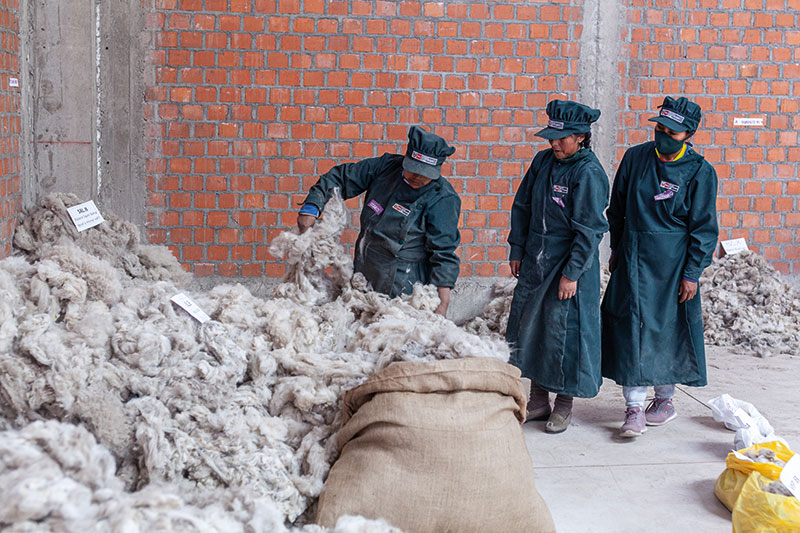
Rural women who classify and categorise alpaca fibre are the links in the value chain that ensure better income for breeding families and serve as ambassadors for climate adaptive breeding practices.
Photo: David Mendoza
The training and certification of the Masters allow them to be hired by public and private entities to provide their technical services in collection, categorisation and classification, ensuring quality for the commercialisation of fibres. Training is conducted by senior Masters to junior apprentices, being a model of local training that works well in rural areas. In addition to technical content, the courses include business management and a practical session focused on sustainable alpaca breeding, with visits to successful experiences in climate change adaptation, such as greenhouses for pasture and water management strategies. These actions are framed to promote improvements in the living conditions of the Master Categorizers and Classifiers and alpaca grazing families in the current context of climate change, which include business strategies aligned with the adaptation measures of the agricultural sector of Peru’s Nationally Determined Contribution.
Boosting new perspectives on access to financing in the camelid value chain in Bolivia
South American camelids are among the main livelihoods of peasant communities in Bolivia, with around 2.5 million llamas and alpacas. About 30 per cent of the income of 53 thousand households in the Andean Highlands is generated by these animals, with limited transformation into textiles, crafts and processed meat. The sector in Bolivia had over 20 years of government support, leading to a growth in the llama meat market from 4.1 million US dollars (USD) in 2004 to 32 million USD in 2022. Despite this, issues such as low productivity and yield, as well as climate impacts resulting in limited availability of pasture and water, do not allow for the consolidation of small and medium producers (SMPs) in territories where it is the only possible productive value chain with market insertion.
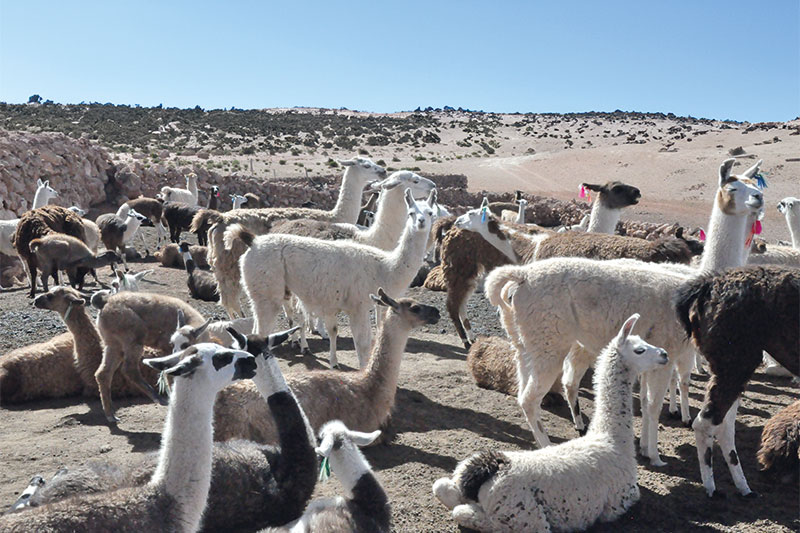
Facing climatic risks like droughts and frosts, it is crucial to shift the financing sector's perception to recognise the challenges camelid breeders encounter, ensuring their access to financial support. Llamas in the Andean highlands of Bolivia.
Photo: Mauricio Zaballa Romero
In this context, since 2016, the Pro-Camelids Programme of the Ministry of Rural Development and Lands (MDRyT) has identified the need to consider climate change and associated risks in financial products aimed at SMPs in the camelid sector. Currently, these products do not consider climate risks, which hinders access to credit for SMPs, who bear the cost of possible adverse impacts. To address these demands, the integration of identified climate impacts in existing financial products offered by banking has been proposed in a study supported by the Andes Resilientes project.
The proposal is to establish an institutional and normative framework to channel resources that strengthen adaptive capacity to climate change in the camelid sector. The objective is to create the Climate Trust Fund for Camelids, which mobilises resources from international funds and the national public budget to finance products such as credits, guarantees, insurance and climate assessments, as well as investments in national market titles to ensure their sustainability. Revenues recovered from the loan portfolio will be reinvested in new loans and fund improvements.
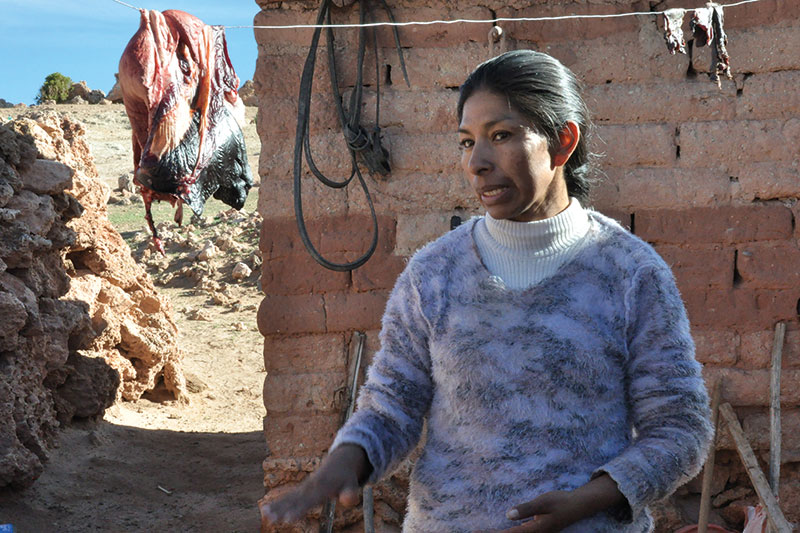
Limited pasture and water availability hinder small and medium producers from consolidating their positions due to low productivity.
Photo: Mauricio Zaballa Romero
To ensure the effectiveness of these financial products on the ground, the proposal includes a diagnosis that identifies best practices that contribute to climate change adaptation according to each ecosystem where camelids are bred. These practices include, for example, water wells, fences for corrals and drought-resistant pasture seeds as “hard” practices related to infrastructure and technologies, and training, pasture rotation and identification of animals more resistant to drought as “soft” practices referring to changes in capacities and skills. The potential adoption of this new perspective for the financial sector is based on the establishment of clear guidelines for evaluating credit and insurance applications for good climate practices that can help the camelid sector be sustainable and profitable.
Reducing vulnerabilities, intervening where intervention is not common
Both experiences show that camelid value chains are highly vulnerable to climate change, with impacts already showing. Based on the climate scenarios of the IPCC “Shared Socioeconomic Pathways” (SSP) 7.0 and 8.5 (see Box), an increase in temperatures and anomalies in precipitation is expected for the period 2081–2099, leading to up to a 20 per cent water deficit in the central and southern Andean highlands. This raises concerns about water stress events and extreme droughts of up to six months.
Shared Socioeconomic Pathways (SSPs)
In its Sixth Assessment Report (AR6), the Intergovernmental Panel on Climate Change (IPCC) introduced new climate change research scenarios called Shared Socio‐Economic Pathways (SSPs). SSPs are standard greenhouse gas concentration scenarios used in mathematical models that simulate what the global climate would be like, including physical processes occurring in the atmosphere and ocean, as a response to the increase of greenhouse gas emissions. Five core SPP scenarios (SSP1 to SSP5) have been developed, each representing different future trajectories for greenhouse gas concentrations based on varying assumptions about factors like economic growth and inequality. Both SSP 7.0 and 8.5 are high-emission scenarios that fall under the pathway of SSP5 after certain conversions.
The interventions supported by the Andes Resilientes project focus particularly on value chain’s links that have historically required strengthening but that can also make significant contributions to reducing climate change impacts. Training, financing and market access are crucial to ensure an understanding of climate risks in camelid breeding and production and to define measures that allow more effective adaptation. For example, there is a reduction in vulnerability with the training of women Master Categorizers and Classifiers in Peru by including techniques for alpaca breeding resistant to climate variability. This, in turn, increases alpaca fibre production allowing for better income. The 63 women trained by the project managed to increase their contribution to the national production in collection, classification, and categorisation from 3 per cent to 5.13 per cent in two years, which resulted in sales of 7.8 million Peruvian soles (around 2.10 million USD). In Bolivia, the implementation of financial products, such as credits and agricultural insurance, that consider the risks of climate change can increase the adaptive capacity that breeding families face. Specifically, insurance can affordably cover damages and losses derived from climate events and ensure the improvement of the quality of life of communities and the maintenance of ancestral knowledge in camelid breeding.
In summary…
The camelid sector already has enormous gaps, accentuated by the effects of climate change in the highland Andean ecosystems. Therefore, any strategy led by states, local governments or international cooperation must have comprehensive interventions that strengthen key links throughout the value chain, such as training, financing and market access, considering the projected impacts of climate change.
The shared experiences show strategies for the climate adaptation of camelid value chains, reducing vulnerability and increasing the adaptive capacity of their breeders. In Peru, the comprehensive strategy of training rural women as Master Alpaca Fibre Categorizers and Classifiers drives rural extension and job placement, and improves fibre quality, increasing incomes for alpaca breeder families, and at the same time, promoting adaptive best practices, from a spokesperson role. In Bolivia, the Climate Trust Fund for Camelids is a solid first step to influence the incorporation of climate risk for the sustainability of the livestock sector in the Andean highlands. The next steps include discussions between the Ministry of Rural Development and Lands and financial entities to develop and implement the mechanism with the inclusion of climate risks.
Ana Maria Vela is Communications Officer for the SDC Andes Resilientes al Cambio Climático regional project at Helvetas Peru.
Maria Gracia Aguilar is Programmatic Coordinator at Avina Foundation. Contact: mariagracia.aguilar@avina.net
Maruja Gallardo is National Coordinator for the SDC Andes Resilientes al Cambio Climático regional project at Helvetas Peru.
Maria Reneé Pinto is National Coordinator for the SDC Andes Resilientes al Cambio Climático regional project at Helvetas Bolivia.
For more information, visit: www.andesresilientes.org
References and more information:
Ministry of Agrarian Development and Irrigation (2024, April 29th): “Oficializan el lanzamiento del Año Internacional de los Camélidos 2024”. El Peruano. From https://bit.ly/3WruxKW
Instituto Nacional de Estadística (INE) (2013). 2013 Agricultural Census: Definitive Results. La Paz, Bolivia: INE.
PRO-CAMÉLIDOS Program (2024). “Diseño de una propuesta de un mecanismo financiero y de un producto microfinanciero para apoyar la producción agropecuaria y su adaptación al cambio climático de los Pequeños y Medianos Productores del sector camélido del Altiplano de Bolivia [Resumen ejecutivo]”.


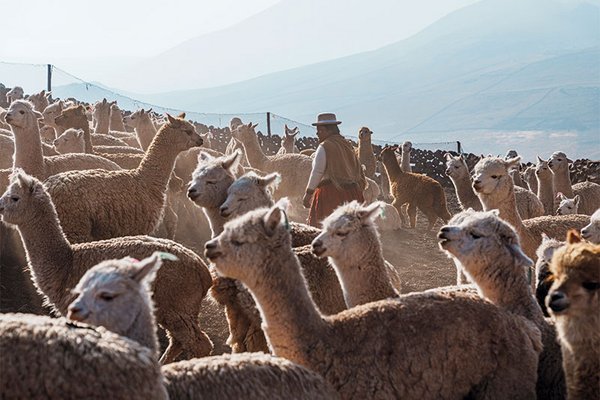
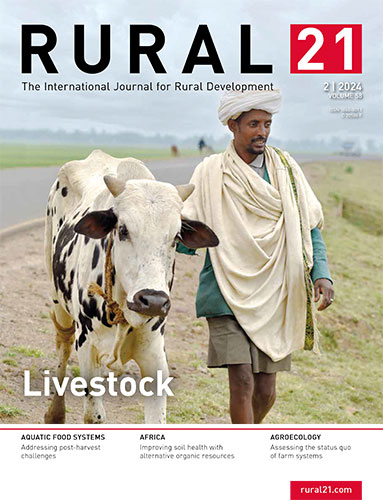

Add a comment
Be the First to Comment